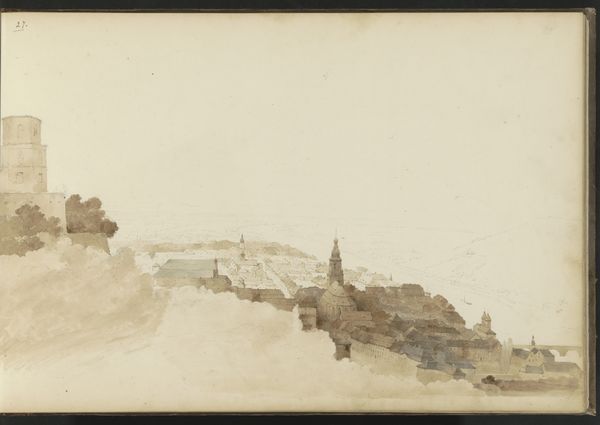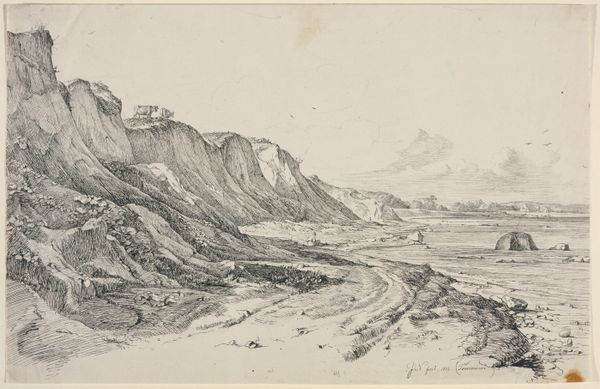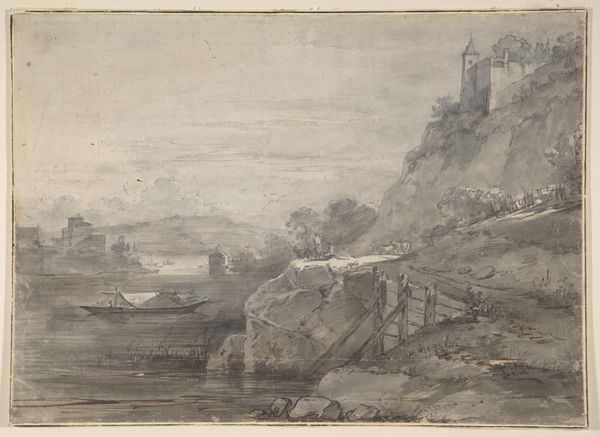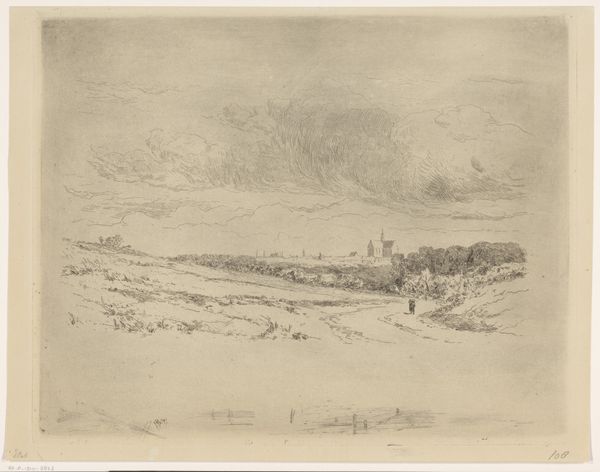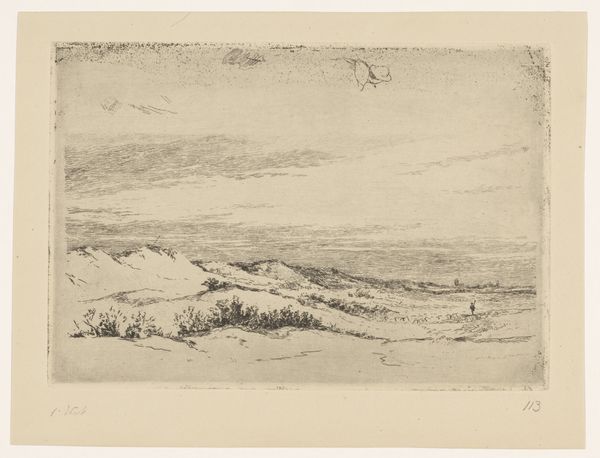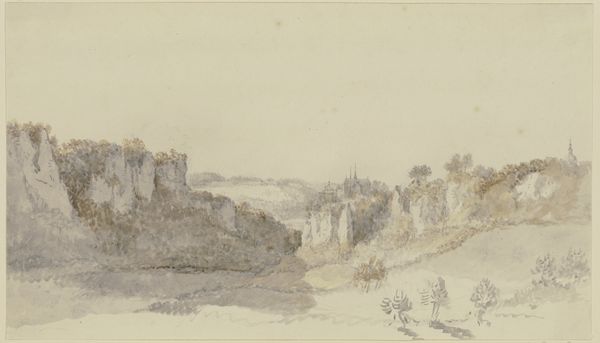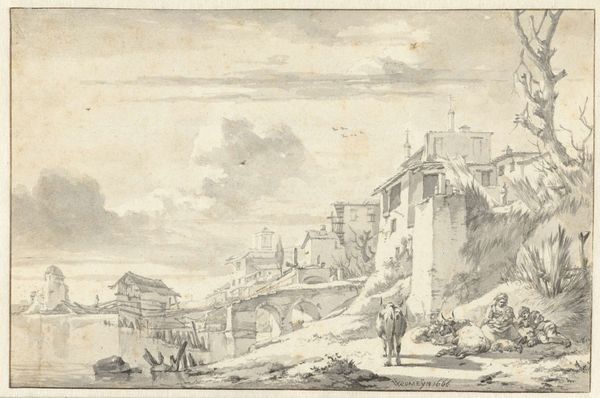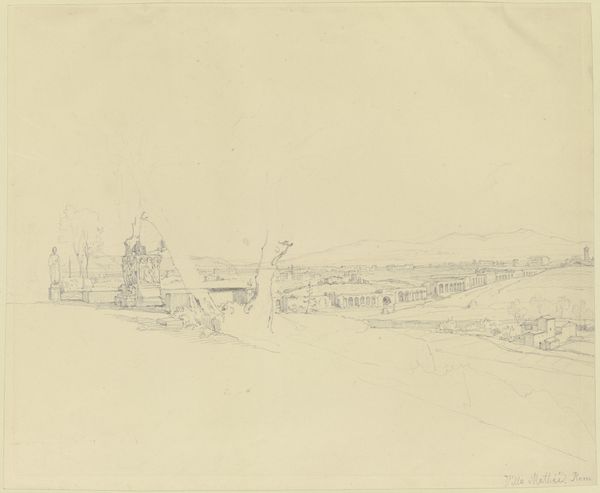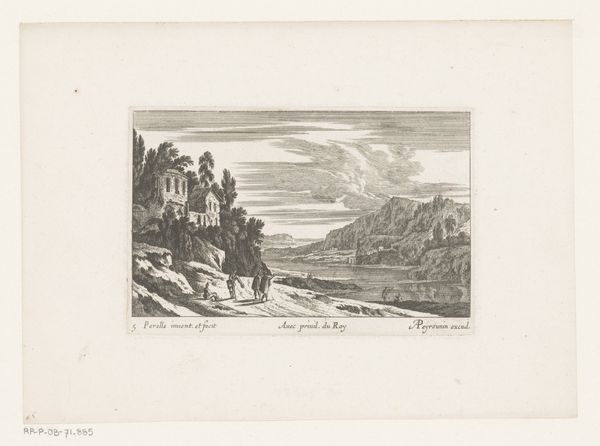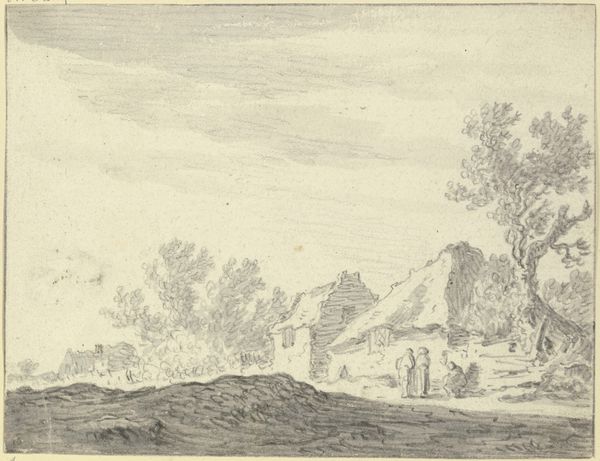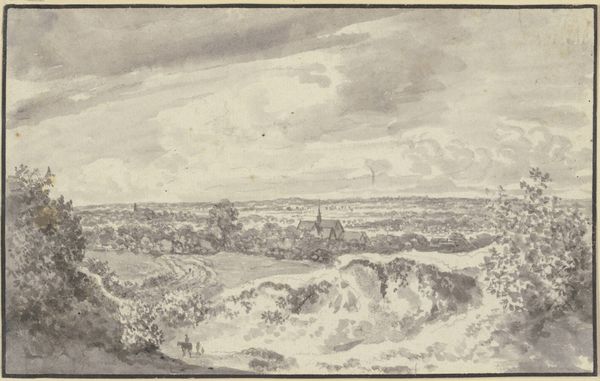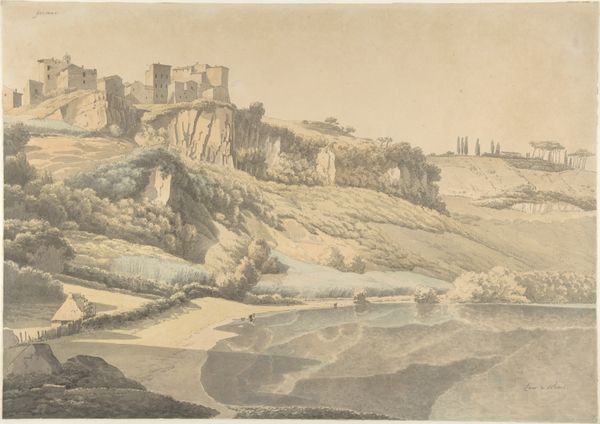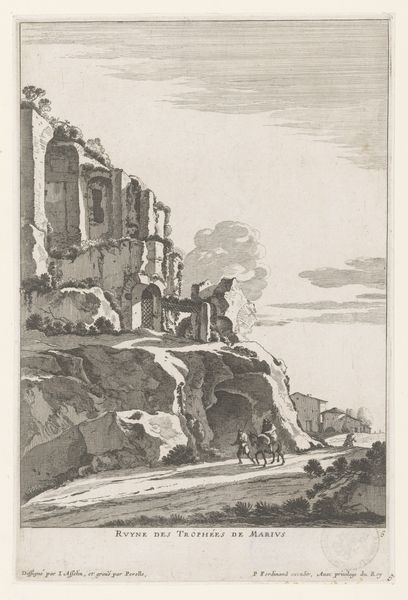
View of the Rhine and Remagen from the North (?) 1815 - 1833
0:00
0:00
drawing, print, pencil
#
drawing
# print
#
pencil sketch
#
landscape
#
river
#
romanticism
#
mountain
#
pencil
Dimensions: sheet: 11 1/4 x 14 11/16 in. (28.5 x 37.3 cm)
Copyright: Public Domain
Editor: Here we have Ernst Fries’ “View of the Rhine and Remagen from the North (?)," created between 1815 and 1833, a pencil drawing. The vista almost fades into the paper itself. How do you interpret this work? Curator: This delicate landscape transports me, demanding consideration of its sociopolitical roots. The Romantic era was steeped in ideas about the sublime and humankind’s relationship to nature; however, this vision also emerges during a period of profound political upheaval following the Napoleonic Wars. Think of it in the context of nascent national identities. How might this view of the Rhine contribute to a growing sense of German cultural heritage, particularly as a response to French occupation and influence? Editor: That's fascinating. I hadn’t considered the nationalist aspect of landscape art. Curator: Absolutely. The Rhine, often depicted in Romantic art, became a symbol of German identity and resistance. Fries’ choice to depict the Rhine from a northerly perspective, combined with the architectural structures depicted – a fortified castle and town – serves to reinforce ideas about cultural defense and historical legacy. Also, I wonder, to what extent does the work represent a real location versus an imagined ideal? Editor: That's something I will definitely keep in mind as I examine other landscapes from this period. Thank you! Curator: Indeed. Placing art within its historical framework lets us discuss even subtle meanings and begin considering diverse perspectives. It enriches our understanding considerably.
Comments
No comments
Be the first to comment and join the conversation on the ultimate creative platform.
